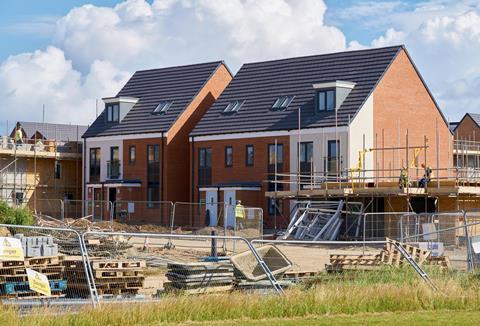Peers will seek evidence on combating barriers to meeting housing demand
A newly-created committee in the House of Lords has launched an inquiry to look at ways of removing barriers to meeting housing demand.
The House of Lords Built Environment Committee, led by Conservative life peer and former minister Baroness Neville-Rolfe, has chosen to focus on housing for its first piece of work.

The wide-ranging inquiry will look at “the key factors shaping the type, tenure and quality of housing” needed across the UK and attempt to answer 11 questions (see box below).
It will investigate potential barriers to increasing supply, including skills shortages, planning policy and capacity in the construction sector.
The peers will probe whether the government’s 300,000 homes a year target accurately reflects housing demand and the extent to which it is achievable.
It will also look at the tenure split of homes, where they are built and how to improve the design and aesthetics of housing. The relationship between the government and local authorities will also be examined.
The committee has today issued a public call for evidence.
Baroness Neville-Rolfe, chair of the House of Lords Built Environment Committee, said: “Our inquiry will focus on what shapes the type of housing needed in the UK as well as a range of challenges to meeting that demand. We will then make our recommendations to Government.
“To inform our work we want to hear from as broad a range of people as possible. If you have a view on housing, look at our call for evidence and let us know what you think.”
The deadline for responses is 10 September.
The questions the committee will try to answer
1. What is the current composition of the UK’s housing sector? How is the sector structured in terms of private ownership, privately rented accommodation and social housing?
2. What social and demographic factors shape housing demand in the UK? What are the expected future trends in housing demand?
3. Does the Government’s target of 300,000 new homes per year accurately reflect housing demand? Is this target achievable?
4. What is the balance of demand for new housing between homes for private ownership, privately rented homes, and social housing? How does this affect the type and tenure required of new homes?
5. What can be done to ensure there is a good balance of new homes where they are needed?
6. Is the construction sector able to deliver the UK’s housing demand? What barriers are facing the sector?
7. The Government has published its proposals for reform of the planning system. How can the planning system be shaped to meet housing demand?
- What role should permitted development rights play in this?
- How might changes to Section 106 agreements shape the provision of social housing?
- How should communities be engaged in the planning process?
8. What can be done to improve the quality of new homes? How can the design and aesthetics of new homes be improved?
9. Is the workforce equipped with the professional, digital and other skills required to meet housing demand, for example in the construction, planning and design sectors? What can be done to overcome skills shortages?
10. How does the Government interact with Local Authorities to deliver more homes? How can this relationship be improved?
11. What are the main opportunities and areas of innovation for meeting the UK’s housing demand?



























No comments yet